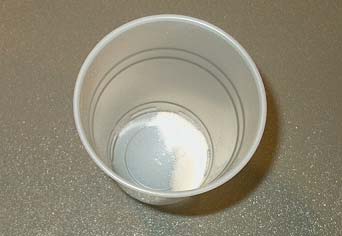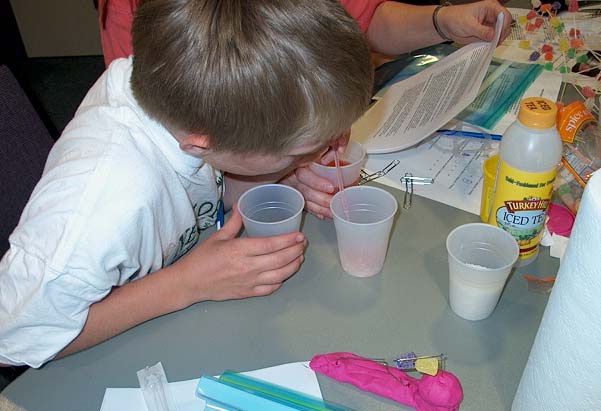





Published on Apr 02, 2024
A polymer is a large molecule, often containing many thousands of small molecules joined together chemically to form one giant molecule. Polymers have many different properties, some are rigid like a milk bottle, and some are flexible such as 6- pack rings and sandwich wrap. Other polymers are goopy like silly putty and slime. Not all polymers are large; some are very small and just as effective as the large polymers. If you have ever changed or watch somebody change a baby’s diaper, you may have noticed a small, crystal-like powder on the baby. This non-toxic powder is the polymer used in diapers designed to keep moisture away from the baby’s skin. Some polymers are linked together in a process known as cross-linking. Crosslinking is a process in which individual polymer chains are linked together to form one giant molecule. Sometimes, when polymers cross-link, they will form pores which are holes that form between the two cross-linked polymers. These pores may hold materials such as water. A polymer that can hold a large amount of water is called a gel. When a gel absorbs a solvent or water, it normally will swell a good deal.
• Isolate the super absorbent polymer in a disposable diaper.
• Explore how this polymer interacts with water.
• 1 disposable diaper (if disposable diapers are not available, a product called Soil Moist can be found at Lowe’s which has the same properties as the diaper polymers)
• Scissors
• Water
• 2 clear plastic cups
• Large, 1 gallon zip-closing plastic bag
• Paper towels
• Food coloring and food coloring dropper
• Measuring spoons
• Tablespoon
To prepare for this activity, gather disposable diapers for the polymers. If you wish not to cut open a diaper, Soil Moist can be used which can be bought from Lowe’s. If using a disposable diaper, here are the steps to remove the polymer:
1. Use the scissors to cut off the edge around the entire diaper. Place the padded middle part of the diaper into the zip-closing plastic bag.
2. Reach into the bag with both hands and separate the cotton, paper and plastic layers of the diaper. Leave all of the material in the bag and then seal the bag and shake it for about one minute. Then, tilt the bag to one side and notice white granules collecting in the corner of the bag.
3. Without opening the bag, move the cotton, plastic and other large materials towards the top of the bag. Keep the solid materials near the top of the bag and shake it, allowing more of the white granules to move to the bottom of the bag.
4. Once you have about a teaspoon of granules in the corner of the bag, slowly open the bag and remove the large pieces of material and throw them away. Take the remaining small, white granules in the bottom of the bag and pour into one of the clear, plastic cups. Make sure to wash your hands after handling this material.

Put the diaper polymers into a plastic cup once you have separated them from the diaper.
Discuss with the children why they think diapers are effective in keeping babies dry. Is it because they are bulky? Is it the absorbent cotton? These two characteristics of diapers help the comfort of the baby; however, it is not the main reason that babies stay dry when they are wearing them. Inside of the cotton layers, there are small powder-like polymers that can absorb a lot of water!
Many diaper commercials claim that they are “super absorbent.” These commercials state that their diapers have properties that can hold more water than any other brand. We will now go inside of a diaper to see how accurate these statements are. Once the polymer from the diaper is isolated, the children will experiment with the polymer to see how absorbent it is. Caution should be used when handling this polymer. It is non-toxic; however, it can irritate the eyes and throat.
• In a plastic cup, place about one cup of water. Then, add two or three drops of food coloring and swirl the food coloring in the cup with a spoon to mix.
• Place 1/2 teaspoon of the powder onto the center of a paper towel.
• Add one drop of the colored water to the powder polymers on the paper towel. Continue adding one drop at a time to the powder and observe the changes you see in the powder. What do the powder polymers appear to be doing? How many drops can you add to the powder before the water spreads away from the powder onto the paper towel?

• Take the rest of your granules and pour them into a dry clear plastic cup. Predict how many tablespoons of water it will take for the powder to gel together. Now try it by adding 1 tablespoon of water at a time. Watch what happens. What do you observe? How close was your prediction?
• What are some other things super absorbent polymers might be used for?
1. Add salt to the water. Baby urine isn’t just made of water, there is salt as well. Put 2 teaspoons in a cup of warm water and add to the diaper polymer. What do you notice about the gel that forms with salt added to it? Continue to add salt to the water 1 teaspoon at a time until you notice a change in the polymer.
2. One of the reasons polymers have special properties is because the molecules can tangle with each other. Which do you think would tangle better: long chain polymers or short chain polymers? Why?
3. Which diaper is the best? Try several different diapers to test their claim as having the best absorption.
4. Globally, about 450 million kg of this polymer is used in the production of diapers. Based on your data, approximately how many diapers will this make? (Hint 12 grams = 1 tablespoon)
Polymers can have many different properties. As you have seen in this activity, some polymers can cross-link and hold a great deal of water. The polymer used in diapers is called sodium polyacrylate. Sodium polyacrylate is an amazing water absorber - it can absorb 200 to 300 times its weight in tap water (even more if the water is distilled) and hold it in a gooey gel.
1. http://www-als.lbl.gov/als/science/sci_archive/superabsorb.html
2. http://www.psrc.usm.edu/macrog/proposal/dreyfus/outcome/diaper/diapers.htm